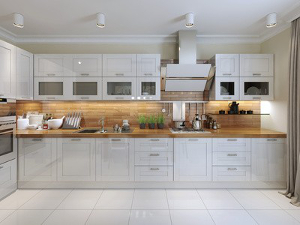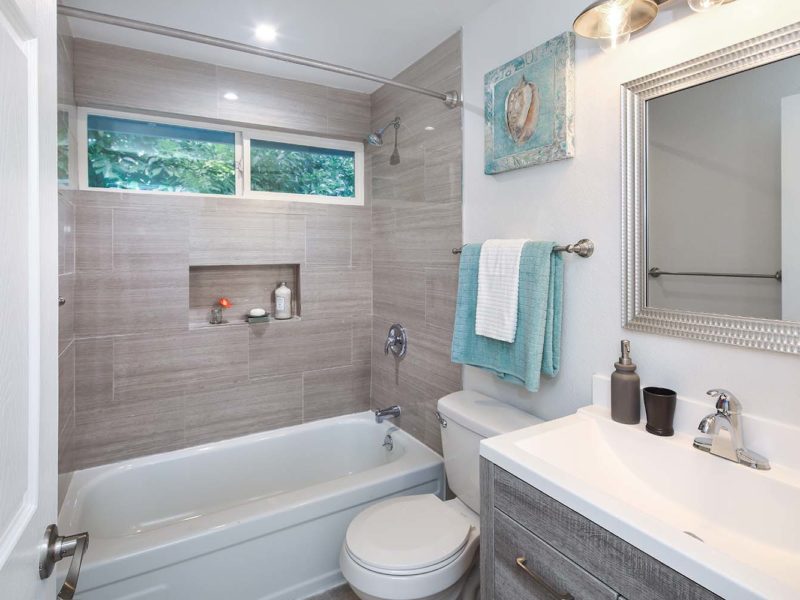Replacement Kitchen Doors Market Report – UK 2015-2019
Available as an Instant Download PDF
Report areas include building products distribution, kitchens, bathrooms, heating and lighting and a number of furniture and furnishings markets are also covered, including dining and occasional furniture, upholstered furniture and beds and office furniture, together with window coverings, wallcoverings and household textiles. Detailed market data and insight on the replacement kitchen doors market by AMA Research, a leading UK provider of construction market intelligence.
£1,599.00 Exc. VAT
AMA Research have published the 2nd edition of the ‘Replacement Kitchen Doors Market Report – UK 2015-2019’. This report incorporates original input and primary research, and represents both an up-to-date and comprehensive review of the replacement kitchen doors and drawers market in the UK.
Key issues covered:
- Market overview – background and size by value of the overall kitchen furniture market.
- Replacement Kitchen Doors market size – market development, size by value and by volume 2010-2014, forecasts to 2019.
- Products and product mix – material usage, share by material, design and material trends, types of unit etc.
- Supply chain review – supply structure, market shares, supplier profiles, distribution channels and shares.
- Installation – types of installers (DIY, independent fitter etc.) share mix estimate.
Key areas of insight include:
- Estimates for 2013/14 and forecasts for 2015 through to 2019.
- Many of the suppliers entering the market in the last few years have focused on the E-commerce sector, although no significant suppliers from the fitted sector have targeted the replacement sector.
- Shift away from DIY and towards professional installation, with most major suppliers now offering and promoting this service.
- Improvements in materials and designs – review of mix of materials used in replacement door market, wider choice of doors and drawer fronts etc – all reflecting developments in the fitted furniture sector.
- Greater consumer awareness of products and fashion trends within the industry, with suppliers offering doors in a wide variety of styles and finishes.
- Growth of Internet – increasingly used to research available products, as well as purchasing and installation options.
- Lower cost materials are more prominent in the replacement doors sector, particularly the prevalence of MDF/foil wrap units.
- Detailed market data and insight on the replacement kitchen doors market by AMA Research, a leading UK provider of construction market intelligence.
Some of the companies included:
B & Q, BA Kitchen Components, Burbidge & Son, Directkitchendoors.co.uk, Doors 2 Size, Dream Doors, Hotdoors.co.uk, IKEA, JNB Interiors, Just Doors, Kitchen Door Centre, Kitchen Door Workshop, Kitchen Magic, Kitchen Warehouse UK, Landau Holdings, Marpatt, Re-Nu Kitchens, Stockpile, The Kitchen Restoration Company, Trade Mouldings, Wickes.
The Replacement Kitchen Doors Market
- Total Kitchen Furniture Market – market background and size by value.
- Replacement Kitchen Doors Market – market development, analysis of market size by value 2010-2014. Forecasts of market sizes to 2019.
- Analysis of Replacement Kitchen Doors Market by volume 2010-2014, with forecasts to 2019 and comparison with door volumes in fitted furniture sector – market shares.
- Factors influencing Market Development – DIY/Professional installation, house moving, economic climate and house price inflation, RMI, consumer confidence, growing influence of design/style changes, population mix changes, increases in the number of second/third time buyers, etc.
- Fitted Kitchen Furniture Ownership – changes in ownership levels in 2014, factors influencing current and future ownership levels and effect on the replacement door and drawer front sector.
Products and Product Mix
- Material Usage – share estimate by material – MDF/Foil Wrap, Solid Timber, MFC/Laminate, Veneer/Veneer Panel, Hand Painted, etc – shares by new and replacement kitchen door market, 2014 volumes
- Trends in Design/Materials in Replacement Kitchen Doors – High proportion of modern and contemporary designs, greater consumer awareness; emphasis on quality and features, trends in colours and finishes, long term trends in styles and designs, etc.
- Trends in Product Mix – share mix by type of unit – double, single, integrated – and comparison with the fitted sector.
- Installation – share mix estimate by DIY, Independent Fitter, Resign/Installation ‘Package’ -recent trends, shift to more professional installation, market drivers, future prospects etc.
Distribution and Supply Chain
- Analysis of Supply Structure – supplier market shares, market position etc, recent developments in supplier shares.
- Profiles of Leading Suppliers – furniture, worktops, sinks suppliers, market position, analysis of activities, financial information etc.
- Distribution Channel Shares – analysis of shares by value – Internet/Mail Order, Kitchen specialists, Manufacturers/Installers etc – trends/developments in shares, growth/declining sectors.
- Role of Distributors – importance of distributors in replacement kitchen doors and drawer front market.
Aside from a dip in performance in 2011, the market for replacement kitchen doors has shown solid growth since 2008, with average growth on an annual basis around 4-5%. This is significantly higher than for the kitchen market as a whole, mainly the result of consumer confidence being eroded as a result of the decline in the UK economy, encouraging consumers to look for cheaper alternatives. While the replacement door market has benefited from the cutback in consumer expenditure, it has perhaps not been to the extent suppliers had hoped for, and the market remains small compared with the kitchen market.
Key issues that have influenced the UK domestic kitchen furniture market in recent years include a blurring of distinction between the kitchen and dining room, with less formality in the home and a move towards open plan living, and an emphasis on aesthetics and stylish designs, with a move towards curved lines, rather than the traditional straight line concept. An increasing number of manufacturers are offering units to suit the needs of elderly or infirm customers and this trend is likely to continue as the proportion of the UK population in older age groups increases.
The kitchen furniture market is at the mature stage of its product lifecycle, with replacement sales currently accounting for more than three quarters of sales. Consumer awareness is high and purchasing decisions tend to be based on design, colour and materials. Features such as soft-closing drawers or handle-less doors, sophisticated lighting and additional electrical appliances in the kitchen environment, such as televisions and coffee machines, are increasing in popularity.
The total market for replacement kitchen doors is expected to show significant, but reducing growth in the period to 2019. In the short term margins are likely to be squeezed further by the increasing cost of raw materials, although increasing use of E-commerce has enabled door manufacturers to absorb some of these cost increases generally. The rate of growth in the replacement market is expected to decline as the economy improves, assuming no major changes in the market structure, such as a major company in the fitted kitchen furniture sector entering the replacement sector. This seems unlikely at the moment, with the mainstream market expected to show steady growth in the future. The sale of kitchens with installation included is also likely to continue to increase.
- Contents Listing
- 1. INTRODUCTION 5
- 1.1 BACKGROUND 5
- 1.2 SOURCES OF INFORMATION 5
- 2. EXECUTIVE SUMMARY AND FUTURE PROSPECTS 7
- 2.1 SUMMARY 7
- 2.2 FUTURE PROSPECTS 9
- 3. ECONOMIC ENVIRONMENT 12
- 3.1 GDP 12
- 3.2 INFLATION & INTEREST RATES 13
- 3.3 UNEMPLOYMENT 14
- 3.4 HOUSEHOLD CONSUMPTION 15
- 3.5 HOUSING & CONSTRUCTION 15
- 3.6 STERLING 16
- 3.7 POPULATION PROFILE 17
- 3.8 CONCLUSIONS 18
- 4. THE UK KITCHEN FURNITURE MARKET 19
- 4.1 OVERALL KITCHEN FURNITURE MARKET SIZE 19
- 4.2 CONSUMER CHARACTERISTICS 20
- 4.3 FUTURE PROSPECTS 21
- 5. UK REPLACEMENT KITCHEN DOOR MARKET 23
- 5.1 MARKET DEFINITION 23
- 5.2 OVERALL MARKET SIZE 23
- 5.3 MARKET TRENDS AND KEY INFLUENCES 26
- 5.3.1 Housing Trends and Demographics 26
- 5.3.2 Design Trends and Materials 29
- 5.3.3 Growing Level of Professional Installation 34
- 5.3.4 Price Competition 35
- 5.3.5 Consumer Confidence Levels 36
- 6. SUPPLIERS 38
- 6.1 INTRODUCTION 38
- 6.2 KEY SUPPLIERS OF REPLACEMENT KITCHEN DOORS 38
- 7. DISTRIBUTION 45
- 7.1 STRUCTURE 45
- 7.2 INTERNET/MAIL ORDER 46
- 7.3 MANUFACTURERS/INSTALLERS 48
- 7.4 OTHER RETAIL OUTLETS 48
- 7.5 SPECIALIST KITCHEN RETAIL OUTLETS 49
- 7.6 OTHERS 50
- 7.7 DISTRIBUTORS 50
- Tables & Charts
- CHART 1 REPLACEMENT KITCHEN DOORS MARKET AND FORECASTS 2009-19 BY VALUE (£M MSP) 7
- TABLE 2 FORECASTS FOR THE REPLACEMENT KITCHEN DOORS MARKET 2014-2019 (£M MSP) 10
- TABLE 3 GDP DATA – 2012-2015 – KEY CONSTITUENT ELEMENTS 12
- CHART 4 INTEREST RATES AND INFLATION (CPI) FROM 2000-2019 14
- CHART 5 PDI & SAVINGS RATIO AT CURRENT PRICES 2000-2019 15
- TABLE 6 EXCHANGE RATE FLUCTUATIONS 2010-2016 – STERLING TO THE DOLLAR, AND THE EURO, SPOT RATES 17
- TABLE 7 UK MARKET FOR KITCHEN FURNITURE 2008-2014 (£M MSP) 19
- CHART 8 HOUSEHOLD OWNERSHIP OF FITTED KITCHEN FURNITURE 1985-2014 (%) 20
- TABLE 9 FORECASTS FOR UK KITCHEN FURNITURE MARKET – 2014-2019 (£M MSP) 21
- TABLE 10 UK MARKET SIZE AND FORECASTS FOR REPLACEMENT KITCHEN DOORS 2010-2019- BY VALUE (£M MSP) 23
- TABLE 11 UK MARKET SIZE AND FORECASTS FOR FITTED NEW AND REPLACEMENT KITCHEN DOORS 2010-2019 (VOLUME AND %) 25
- TABLE 12 NUMBER OF PROPERTY TRANSACTIONS IN THE UK 2007-2014 (000’S) 28
- TABLE 13 AVERAGE HOUSEHOLD SIZE FOR GREAT BRITAIN 1991-2016 29
- TABLE 14 UK MARKET FOR KITCHEN DOORS AND REPLACEMENT KITCHEN DOORS BY MATERIAL 2014 (%) – MDF/FOIL WRAP, SOLID TIMBER, MFC/LAMINATE, VENEER/VENEER PANEL, HAND-PAINTED, OTHERS 30
- TABLE 15 UK MARKET FOR REPLACEMENT KITCHEN DOORS BY MATERIAL 2014 (VOLUME AND %) 31
- TABLE 16 THE UK MARKET FOR KITCHEN DOORS AND REPLACEMENT KITCHEN DOORS BY TYPE OF UNIT 2014 (%) – DOUBLE, SINGLE, INTEGRATED ETC. 32
- CHART 17 UK REPLACEMENT KITCHEN DOOR MARKET – INSTALLATION MIX BY VALUE (%) 2014 – DIY, INDEPENDENT FITTER, PACKAGE DEAL 35
- TABLE 18 MARKET SHARE OF MAJOR KITCHEN FURNITURE SUPPLIERS 2014 – BY VALUE 44
- CHART 19 REPLACEMENT KITCHEN DOORS – DISTRIBUTION STRUCTURE 45
- TABLE 20 REPLACEMENT KITCHEN DOORS MARKET BY DISTRIBUTION CHANNEL – 2014 SHARE BY VALUE (%) – INTERNET/MAIL ORDER, MANUFACTURERS/INSTALLERS, KITCHEN SPECIALISTS ETC 46

Paired Report Discount
Save £250 for every two reports you buy
Discount applied in basket
Frequently bought together

Trusted by industry leaders
For more detailed requests speak to our research experts directly
Research you can depend on
Our reports go deeper to give you the insights needed to make your next strategic move.
- Detailed assessment of the market – analysis of the market structure and recent developments within the market.
- Market prospects up to 4 years – market value, opportunities, impact of Covid-19, Brexit etc.
- Detailed information – market size, influences, market factors and key players.
- Analysis by product group – market size, product mix, sector trends etc.







